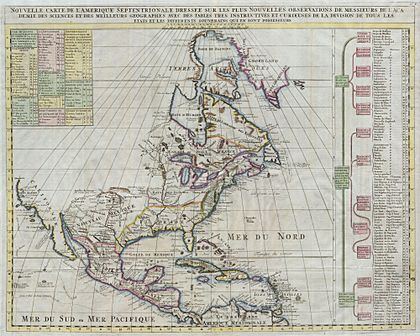Seven Cities of Gold facts for kids
The myth of the Seven Cities of Gold, also known as the Seven Cities of Cíbola (/ˈsiːbələ/), was popular in the 16th century and later featured in several works of popular culture. According to legend, the seven cities of gold referred to Aztec mythology revolving around the Pueblos of the Spanish Nuevo México, modern New Mexico and Southwestern United States.
Besides "Cíbola", names associated with similar lost cities of gold also included El Dorado, Paititi, City of the Caesars, Lake Parime at Manoa, Antilia, and Quivira.
Origins of myth/legend
In the 16th century, the Spaniards in New Spain (Mexico) began to hear rumors of "Seven Cities of Gold" called "Cíbola" located across the desert, hundreds of miles to the north. The stories may have their root in an earlier Portuguese legend about seven cities founded on the island of Antillia by a Catholic expedition in the 8th century, or one based on the capture of Mérida, Spain, by the Moors in 1150.
The later Spanish tales were largely caused by reports given by the four shipwrecked survivors of the failed Narváez expedition, which included explorers Álvar Núñez Cabeza de Vaca and his slave Estevanico. Eventually returning to New Spain, the adventurers said they had heard stories from natives about cities with great and limitless riches. In 1539, Italian Franciscan Marco da Nizza reached Zuni Pueblo and called it Cibola. However, when conquistador Francisco Vázquez de Coronado finally arrived at Cíbola in 1540, he discovered that the stories were unfounded and that there were, in fact, no treasures as the friar had described—only adobe towns.
While among the towns, Coronado heard an additional rumor from a native he called "the Turk": that there was a city with plenty of gold called Quivira, located on the other side of the Great Plains. However, when at last he reached this place (variously conjectured to be in modern Kansas, Nebraska, or Missouri), he found little more than straw-thatched villages.
The historic Cíbola on the other hand is recorded in Spanish sources as another name for the Zuñi pueblo and the surrounding country. The Spanish soon discovered rich copper and turquoise mines in the Pueblo country which made the region famous for its mineral wealth even in recent times. The Pueblo Indians, including the Zuñi, are still well known for their turquoise and silver work.
See also
 In Spanish: Cíbola para niños
In Spanish: Cíbola para niños


